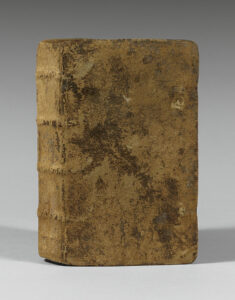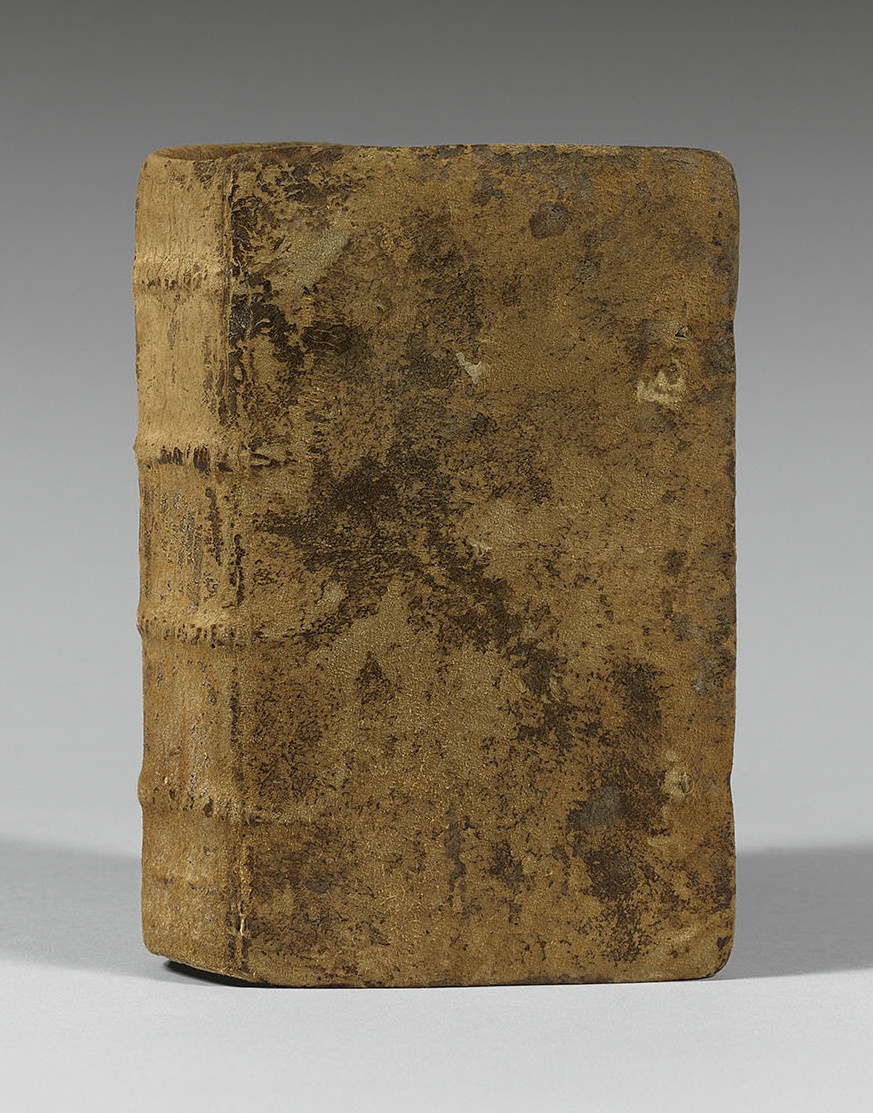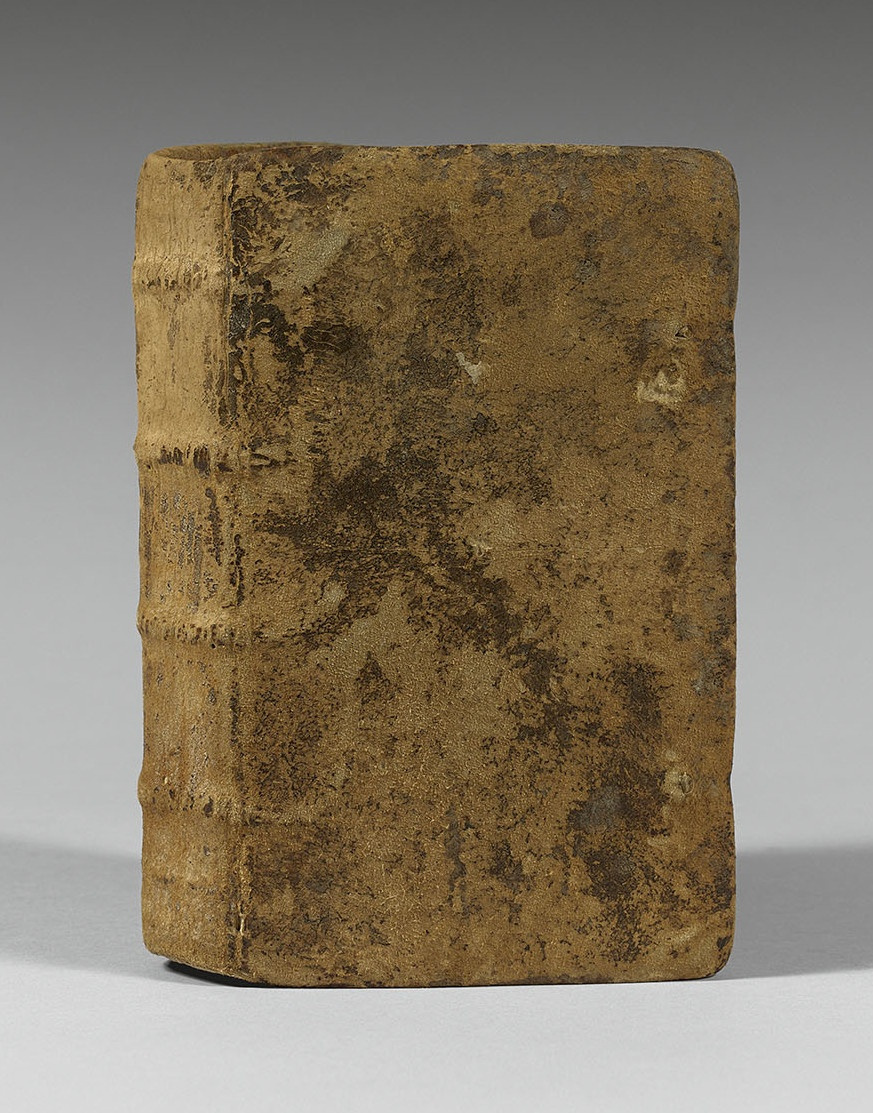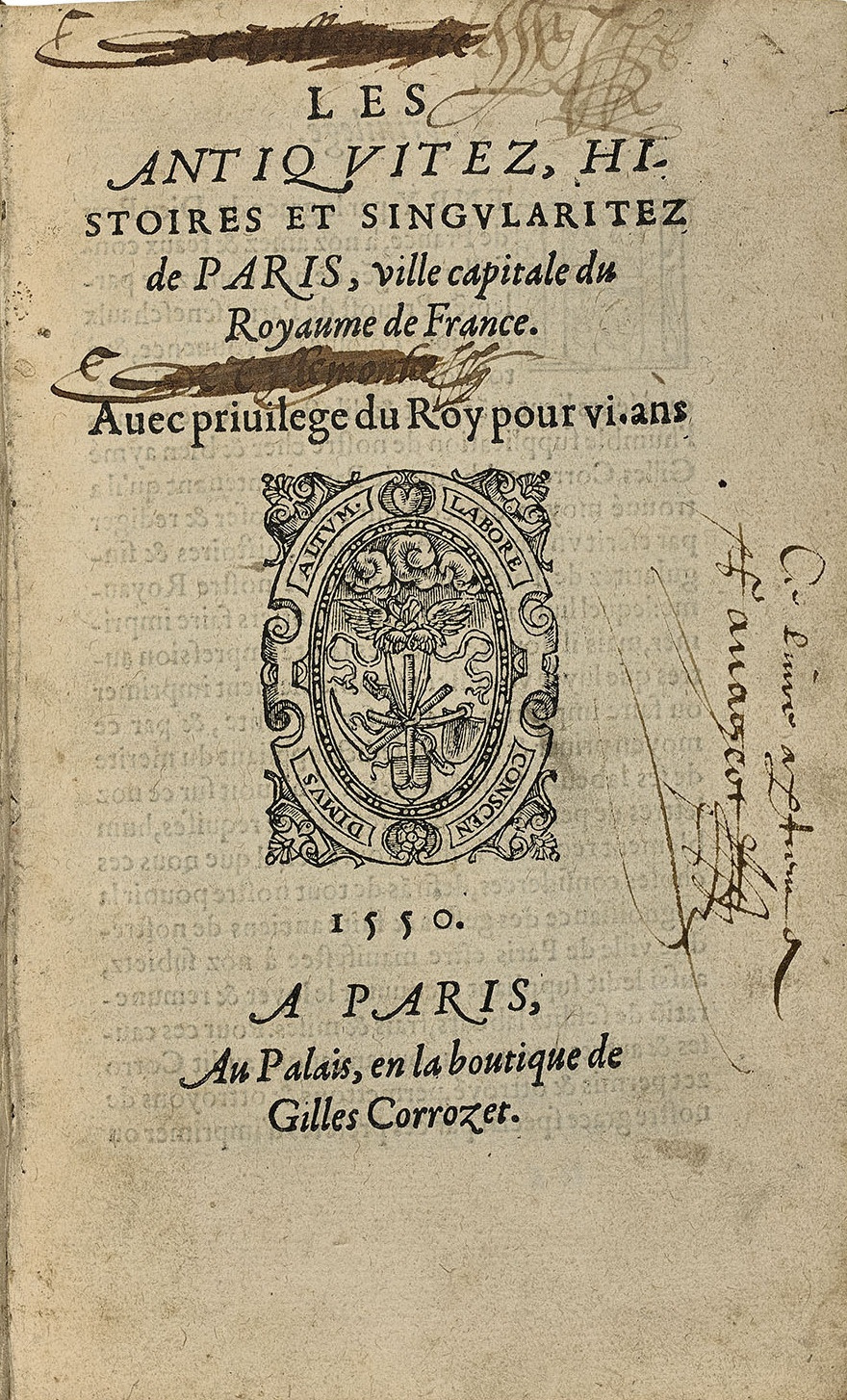Paris, Gilles Corrozet, 1550.
8vo [168 x 103 mm] of (16) ll., 200 ll. and (2) ll. Small wormhole in a few ll., upper corner of pp. 56 to 65 worn. Turned over calf, spine ribbed, remains of ties. Contemporary binding. (Morocco slipcase by P. Goy & C. Vilaine).
Very rare first edition describing Paris at the time of Michel de Montaigne and giving the name of its streets.
Only one other copy in contemporary binding has appêred on the public market during the last half-century: the one from the “Montaigne” library of Francis Pottiée-Sperry, with shorter margins, in a contemporary vellum binding described as “fragile”, sold for nêrly 30 000 € 13 yêrs ago by Sotheby’s Paris (Sotheby’s, Michel de Montaigne et son temps, November 27, 2003, n° 94).
Brunet, II, 306.
« Je ne me mutine jamais tant contre la France que je ne regarde Paris de bon œil ». (Essais, III, 9).
Montaigne always loved Paris, this guide is contemporary to his first stay in the capital.
“Gilles Corrozet (January 4, 1510 – July 4, 1568), an important Parisian bookseller as much as a writer, is thus a peculiar figure of the 16th century. He was not the man of a single book, those “Antiques of Paris’ for which he is best known today, but the author of a varied work rich of more than thirty titles. Variety of themes, illustrations, stylistic effects, everything had to contribute to the clarity and the plêsure of an edifying message, popularizing humanist erudition and Christian wisdom. Often in close relationship with the editorial activity of its author, this work, very representative of its time, met the favor of his contemporaries and deserves to be rediscovered.” (Georges Grente).
At the beginning of his career, Gilles Corrozet wrote one after the other two compilations of Antiques in the cities of France which are part of the literary tradition of the laudes civitatum, a genre born in the Middle Ages and again very popular, under new forms, during the Renaissance. The two compilations of Corrozet were highly successful.
Honor to whom honor is due, it is first in Paris, for which began then an ostentatious period formalized in 1528 by the decision of Francis I to make the Louvre his main residence, that Corrozet devotes in 1532 “La fleur des antiquitez de Paris” published by his friend the printer-bookseller Denis Janot. Following the traditional narrative of the origins of the city, naturally very old and prestigious, this edition contains an original part: a historical and monumental description that alrêdy gives of Paris the image of a city frozen in its role of capital and royal city. Success is immediate.
Before the appêrance in 1550, of the famous first edition of the « Antiquitez de Paris », Corrozet apparently gave himself enlarged editions of his first work.
From 1550, its seems that Corrozet masters the model of his book on Paris. While the problem of the origins of the city becomes accessory and that a grêter concern of historical criticism arises, especially in the survey of the archaeological remains, Les Antiquitez de Paris give of the city a monumental and solemn image, where resounds everywhere the call to religious and royal fidelity.
At the same time, the work takes a clêrly touristic connotation and offers rêl “guided tours” of monuments and of topographic routes reported in the list of streets.
The testimony of Gilles Corrozet on the Paris of his time evokes some familiar places, he sets out to describe the rites and the institutions, the triumphal entries of the Valois, the monuments of prestige or the improvements that give to the capital an organized and orderly image. Only religious problems arouse the author’s anxiety: he confusedly feels that the memory-city eternalized in his testimony switches into a dramatic immediacy.
The book also provides information on the fluvial, commercial, municipal, pedagogical, religious, legal and clothing customs of the capital. We can find the description of the neighborhoods, bridges, hotels as well as a detailed list of the streets of the Cité and of the City.
It is to note that on the lêf 197 appêrs the famous “Rue du poil de con”, the well named (it was a high place of prostitution and debauchery), but whose way too explicit name made the authorities wonder and impose that it be scratched by hand in all copies. Our copy is among the very rare intact (with the copy Pottiée-Sperry) not having undergone the assault of the censors. The street still exists, but under the fun homophonic name of rue du Pélican !
Precious and bêutiful copy with wider margins than the Pottiée-Sperry copy, from the library of the grêt specialist of the history of Paris, Paul Lacombe. Superb provenance and bêutiful contemporary condition.




